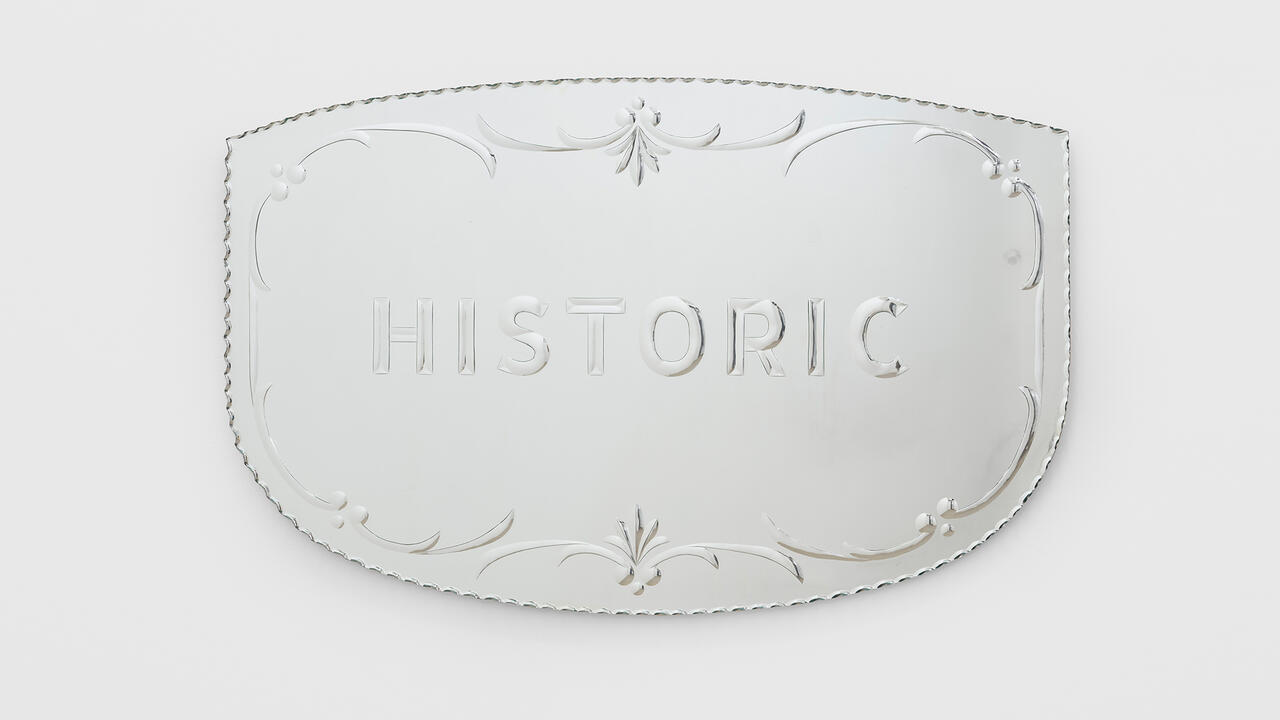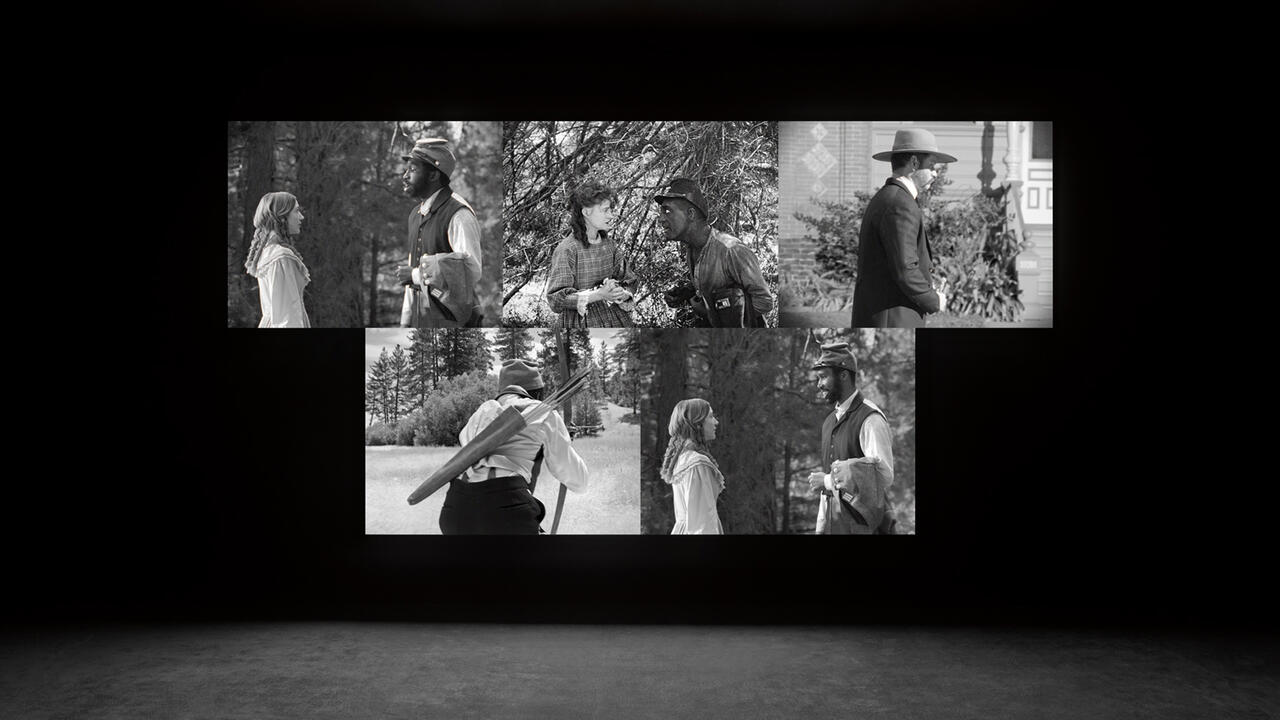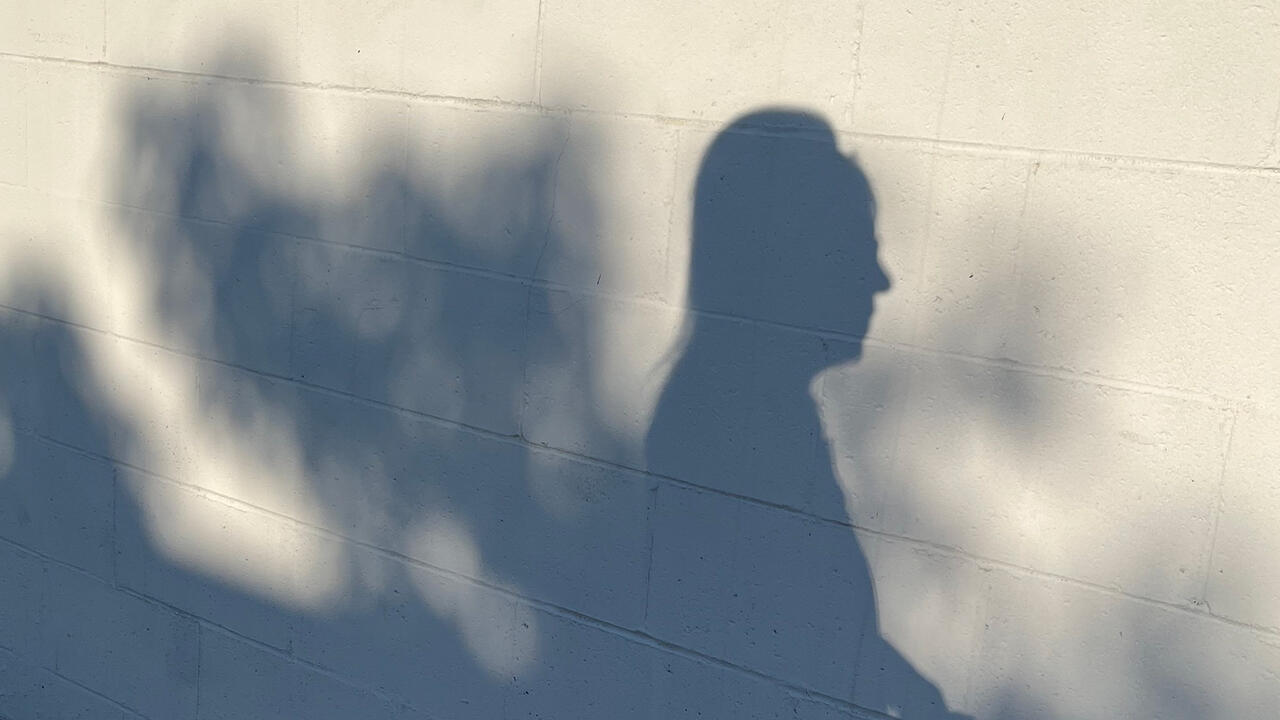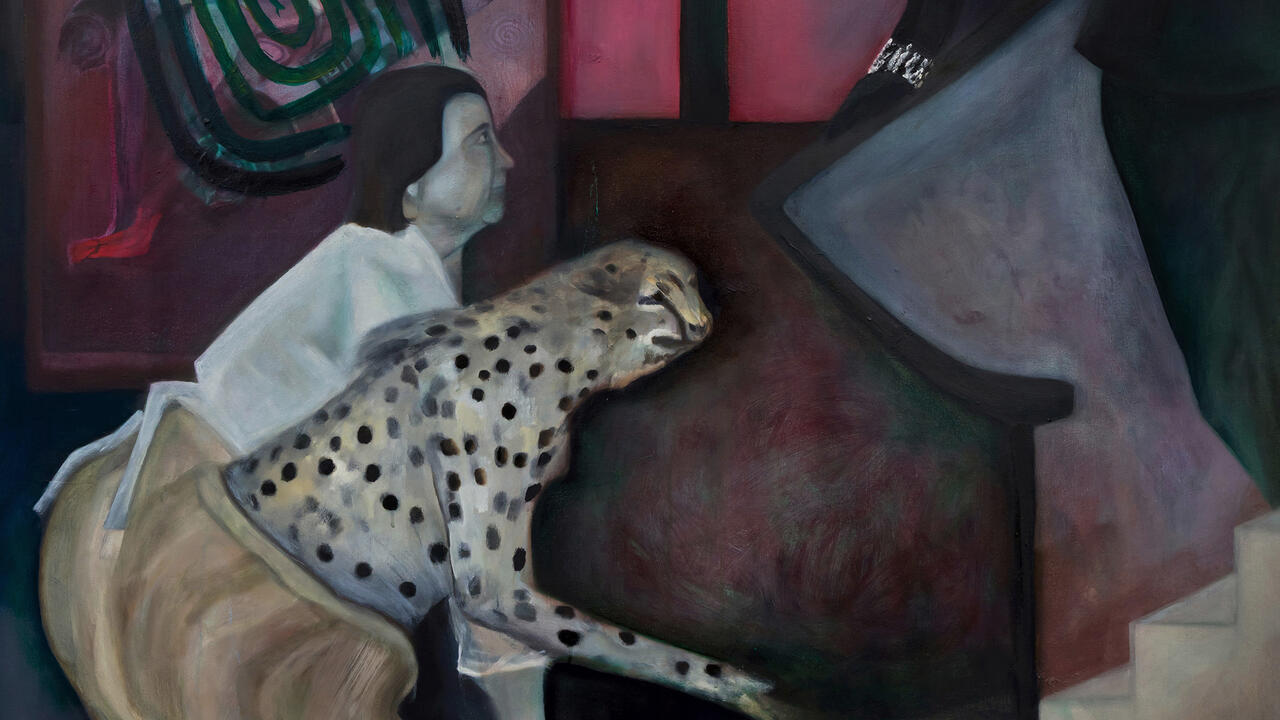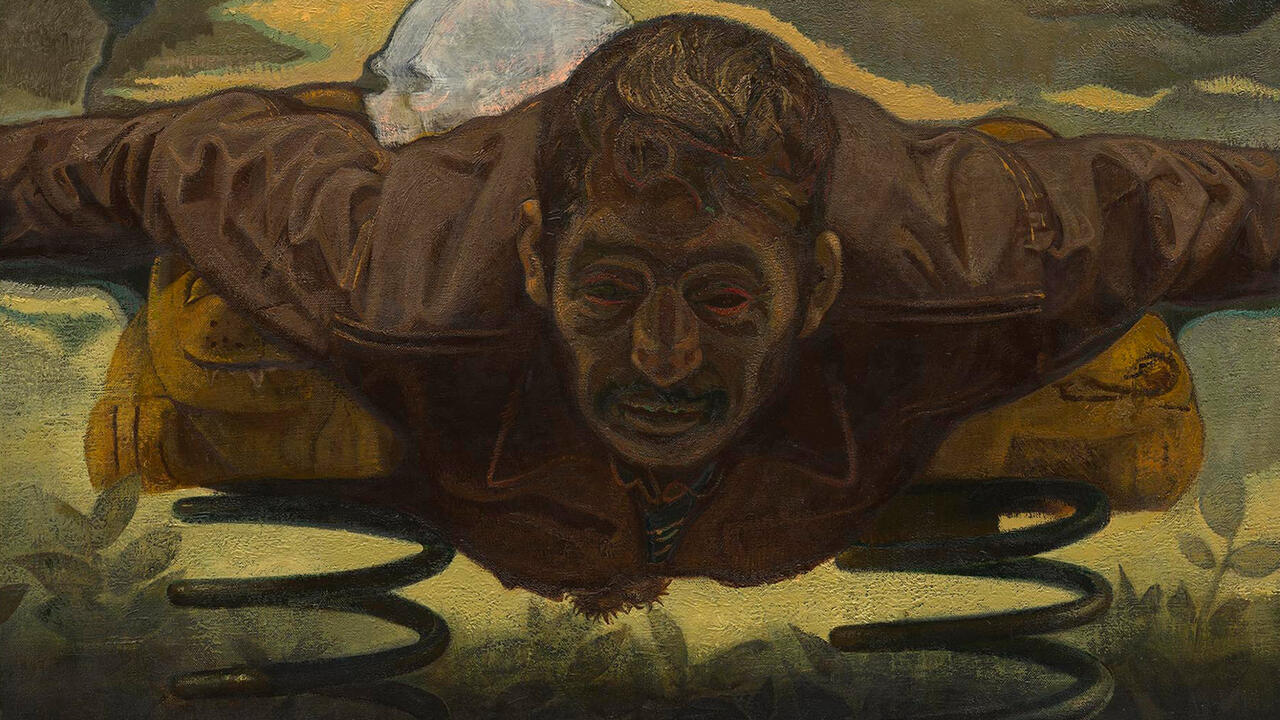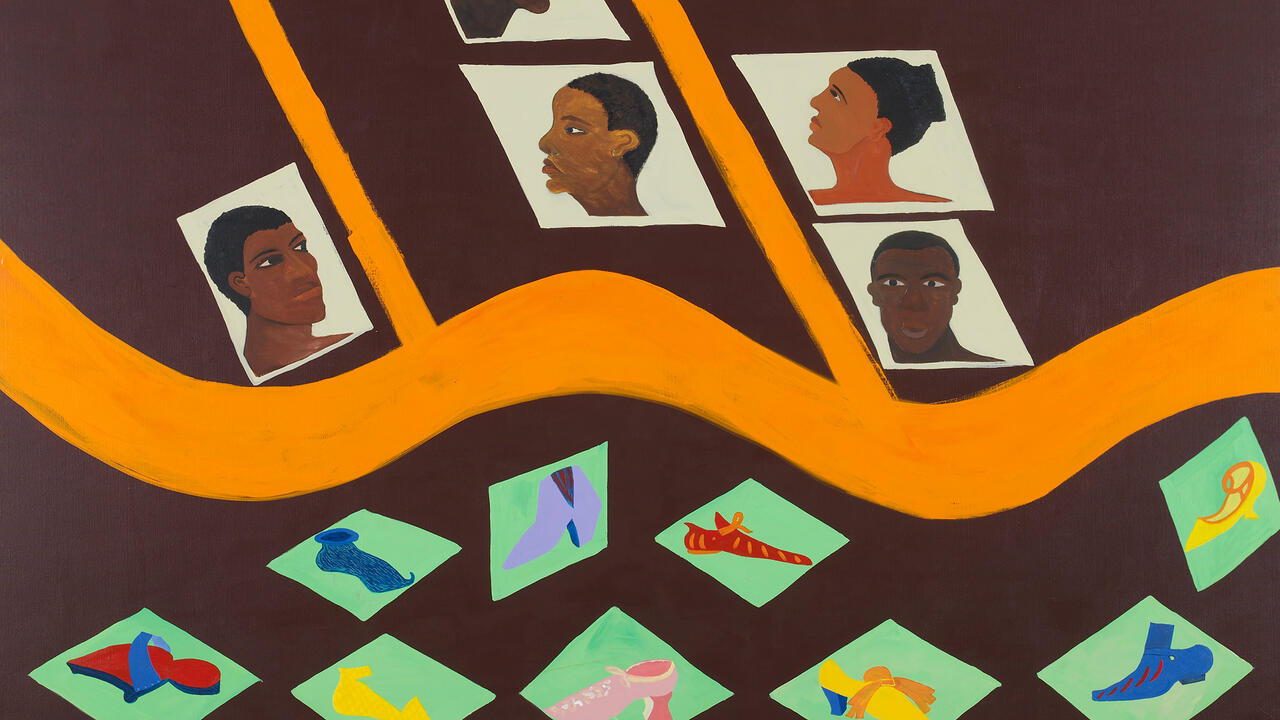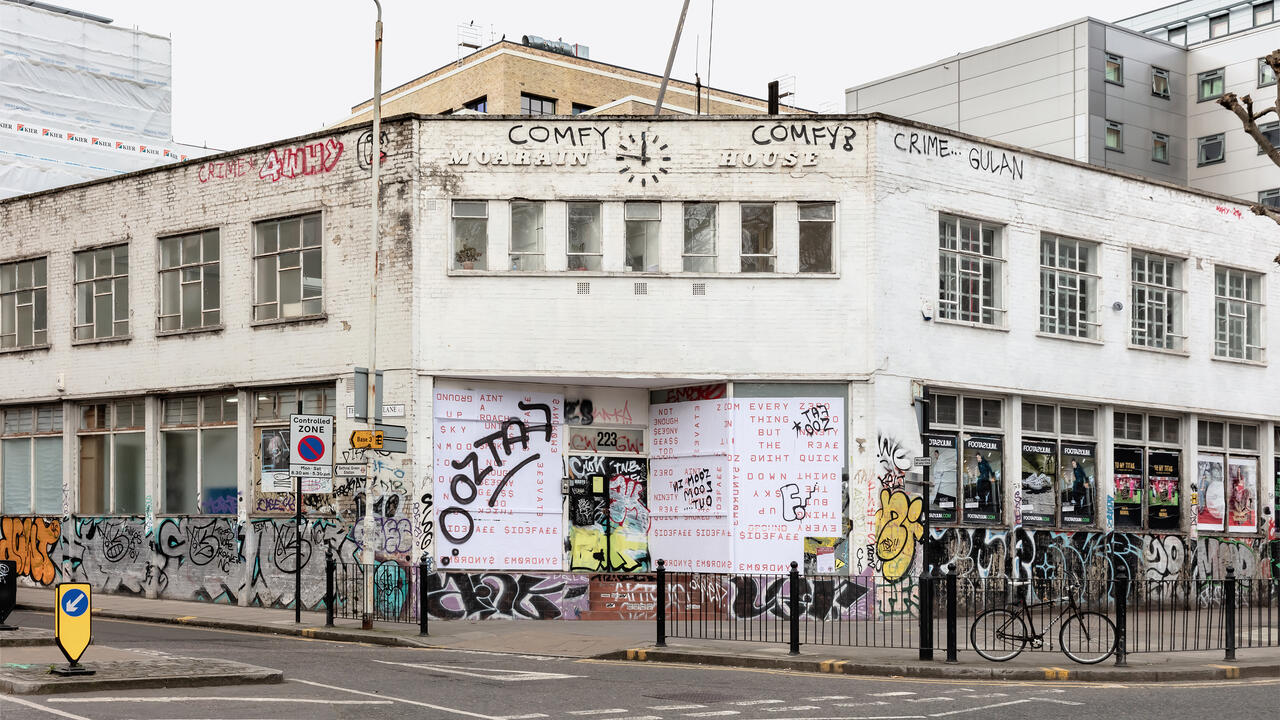Martin Beck
Gasworks, London, UK
Gasworks, London, UK
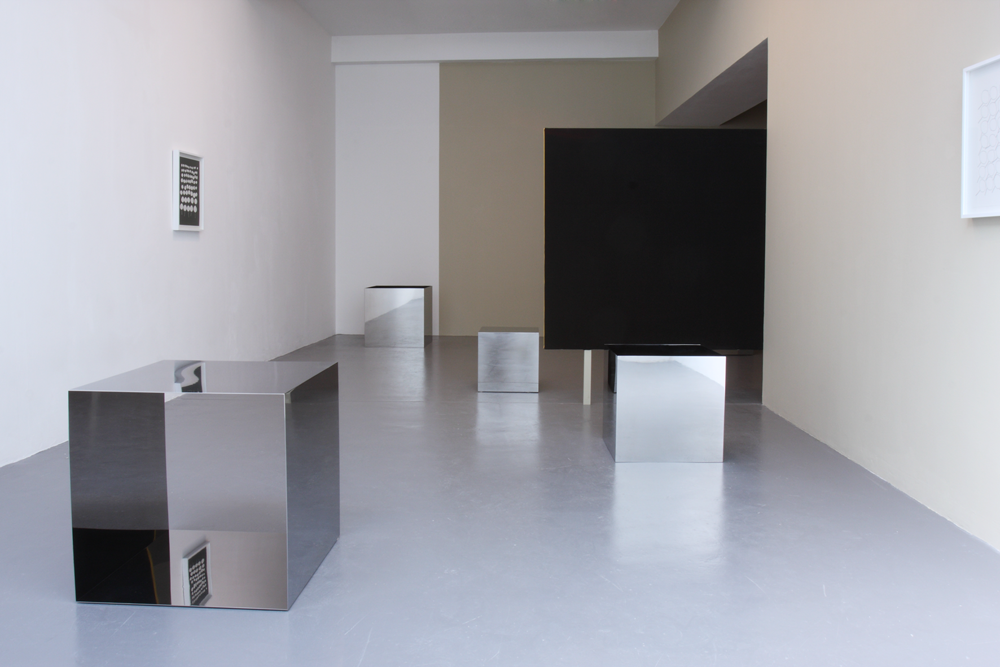
Outside the gallery a painted sign announces the title of Martin Beck’s exhibition: ‘Panel 2: “Nothing better than a touch of ecology and catastrophe to unite the social classes …”’ This provocative quotation is seemingly dismissive of ecological anxiety and of attempts to organize a shared response to environmental change. It is also a tautology, a panel that declares itself as a panel, while referring to a panel in its sense of a group of speakers addressing an issue of the day. This public framing is a deliberate gesture to the present tense of life outside the gallery and helps to open out the contradictions of the show as a form of communication.
The exhibition presents a fascinating crunch point at which ecology was being distinguished from the looser discourse of ‘pollution’ – a discussion that was calamitously curtailed in the 1970s by the left as well as the right. Beck invites the viewer to take a position but does not claim to know what to do with it. The documentary evidence on show – including a publication – contrasts with self-conscious ‘works’ whose abstraction rebuffs rather than affirms the viewer: a blank coloured panel, decorative prints and mathematically proportioned reflective cubes. It’s a troubling combination.
Beck’s source is the ‘Environment by Design’ conference held in Aspen, Colorado, in 1970. The conference had developed through the 1950s and ’60s as a place for designers to encounter speculative thinking on various themes, including science, but the 1970 event marked a rupture, at a time when the hippie revolt was in full sway. The conflicts are vividly recorded in Eliot Noyes and Claudia Weill’s documentary IDCA 1970, presented in the gallery foyer with other key documents. It is compelling to hear the voices of people committed to careers in design but also grappling with the deepening democratic instincts of the time, and with the social and ecological implications of their chosen field.
The French delegation to Aspen refused to take part and issued a bitterly clever statement written by Jean Baudrillard, which Beck quotes in his title. Baudrillard saw the turn to the environment as a post-1968 ideological realignment, and dismissed it as ‘a social drug, a new “opium of the people”’. Reyner Banham, in a text one can find on the foyer bookshelf, argues that ‘Against such gut-felt dissent and Olympian superiority there were those who believed something could be done – could only be done – through the system’. He was bold in setting out these choices so clearly, and, incidentally, his television programmes inthe 1970s were among the first places such discussions could be heard by people who don’t go to conferences.
What are the specific claims and abilities of art in this polarized context? Part of Beck’s answer seems to be a position of self-conscious weakness. Open stainless-steel cubes, polished almost to a mirror, function as an image of sculpture, as historical reference to art of the time without any burden of conviction or affirmation. They are not produced from or tied to the research by any necessity. Screen prints, reproducing leaf designs by Ivan Chermayeff, are titled according to the chapters in the Aspen anthology they originally accompanied (‘Problems, Problems’; ‘Polarisation’). The overall impression is of décor and lightness, of polite but arbitrary style choices.
The prominence given to the French delegation’s text remains more puzzling. It is the focus of Beck’s video The Environmental Witch-Hunt (2008), which is shot in an aspen forest. A group of mostly younger people set up tables and read from parts of Baudrillard’s polemic. The camera pans left and right, and not mechanically: a social, negotiated space opens up. It’s less vivid than that of the 1970 documentary, necessarily, but not without a sympathy for its subjects. Those subjects are not negotiating, however. Just one, strikingly expressed, critique of ecological language is preferred for memorialization: ‘It is not true that society is ill, that nature is ill.’ The video appears to reflect on a thinning out of the history generously provided elsewhere. The present appears drained of energy by retrospection, and an impression of powerlessness is conveyed.
Beck self-consciously offers art objects as arbitrary footnotes to a subject, as obstacles to direct documentary transmission. He defers to viewers, letting them draw their own conclusions. Frustratingly, at a time of generally agreed ecological crisis, this precludes a more robust sense of what might also be shared.










